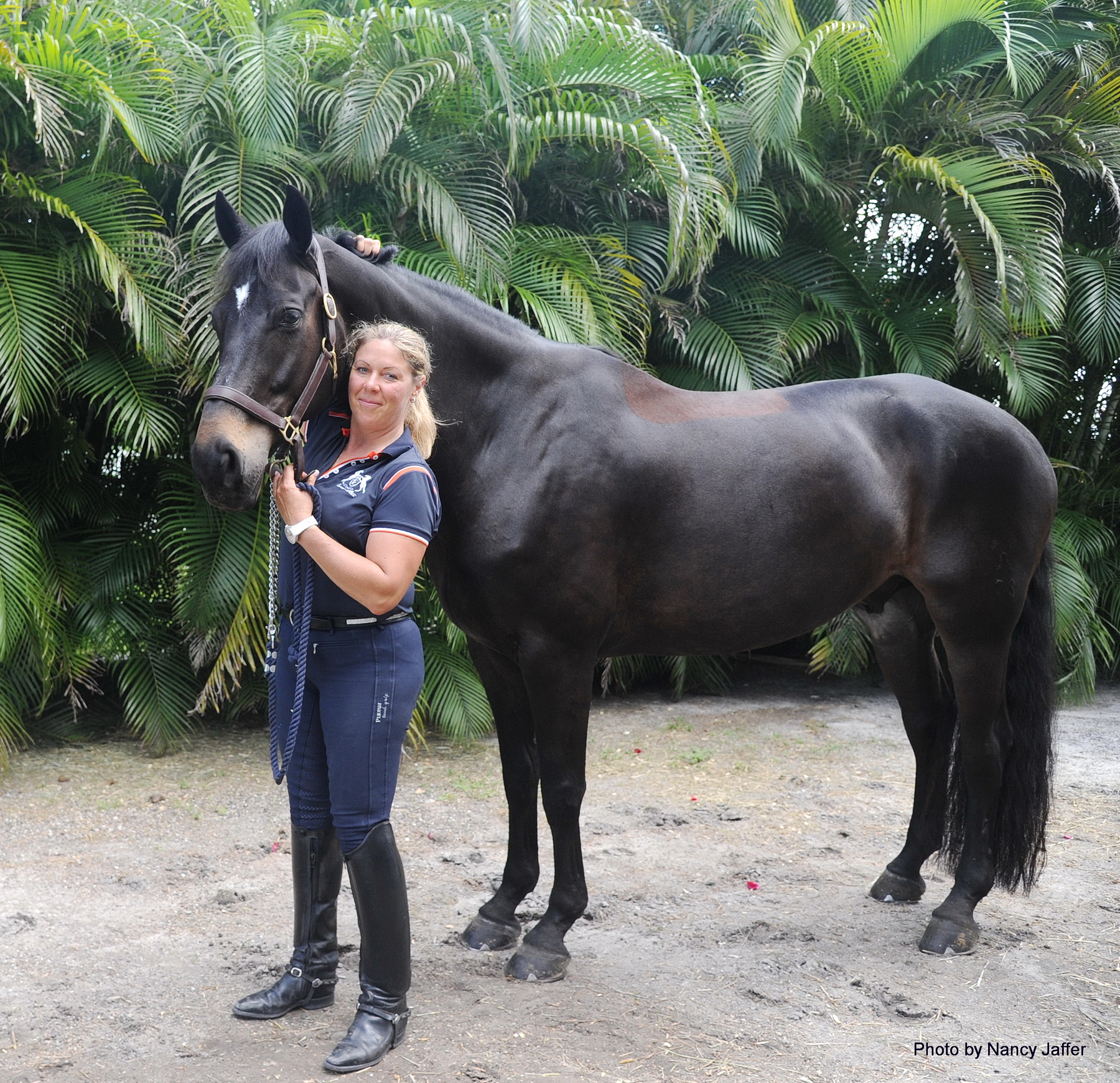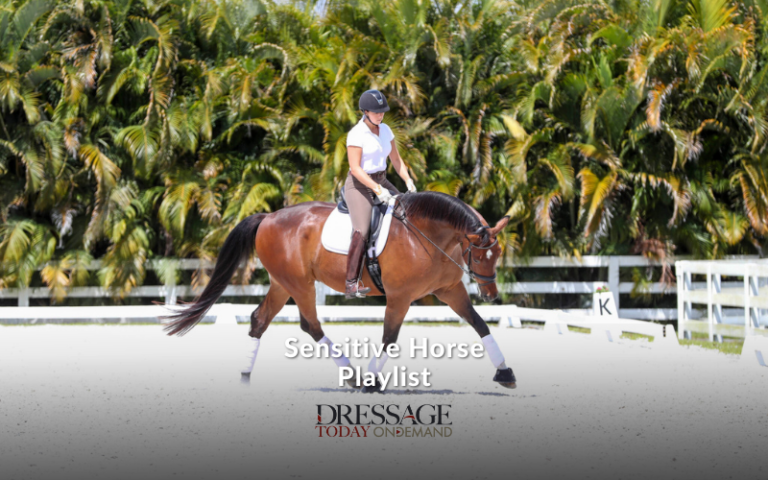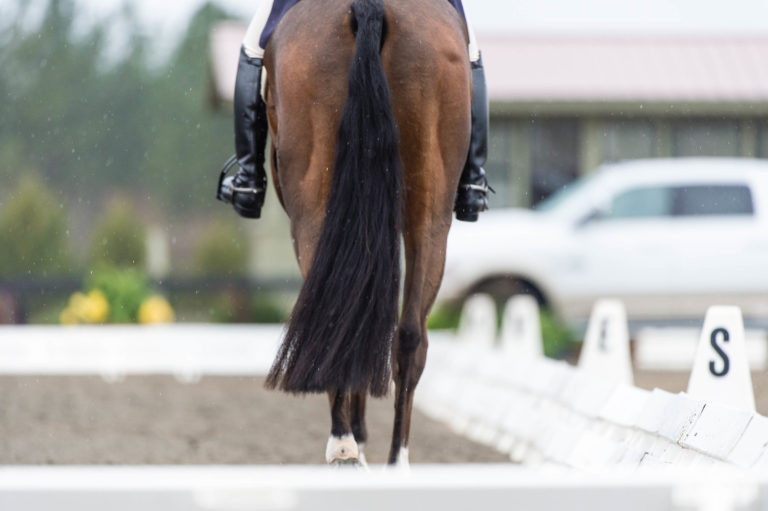
After experiencing the high of contributing to the team gold medal at the 2015 Pan American Games in Toronto, my longtime partner, Rosmarin, had a major setback.
I have experienced heartbreak with horses in the past, but when your top horse has exploratory arthroscopic surgery only six months after such a big season, it really hits home.
The focus then shifted from competition goals to mapping out a treatment and recovery process that was best for my horse. Talking with all the veterinarians involved and coming up with a plan to rehab Reno to soundness and fitness became paramount.
If you own horses, it is pretty much guaranteed that you will deal with an injury at some point that will sideline him or her in their training. It is unfortunate but inevitable, and depending on what your vet suggests, there are usually many opinions on the proper way to bring them back to work.
This also can vary depending on the actual injury and the measures taken to help the healing process. Of course, you should always consult with your vet about rehab protocol for the specific type of injury.
Managing and Monitoring Stall Rest
I can share what I learned from my experience; It is helpful to know your horse and how he feels on a daily basis while on stall rest. Monitor his body and legs, his moods and eating habits. You must be aware of any abnormal behavior stemming from the change in routine going from work and turnout to complete stall rest.
When it’s time to start increasing movement or work, whether hand-walking or riding, you must do it safely. If your horse is explosive and reactive to everything, you should consider helping him to be calmer and quieter. The risk of injury to you or your horse from too much bottled-up energy is a real issue to be considered. Speak to your vet about Acepromazine tablets or other sedatives to take the edge off a recuperating horse. You can administer the tablets in a small amount of grain or put them in a syringe with a little water and squirt them into the mouth. It generally requires only 30 minutes for the tablets to take effect.
Also available are natural alternatives, such as magnesium-based calming products that can be fed in their grain. You should handle them during a quiet part of the day, not at feeding time or when there’s a lot of activity going on in the barn.
Graduating to Hand Walking and Light Exercise
I am fortunate to own a covered walker that has a large diameter circle (86 feet), which is very convenient for rehabbing and fitness. The horses seem to enjoy their time on it, and the walker keeps them mentally in a good place when turnout is not an option due to bad weather, mud or ice. I can control how often it reverses and the speed at which it moves. I usually put horses on it before riding them when they are in a rehab situation. They usually go on the walker twice daily for 30-45 minutes.
Start very slowly with the work if you don’t have options other than riding. If you have been strictly walking and finally got the okay from the vet to start trotting, only trot the long sides while walking the corners to start. Keep the stress level low, with short sets, so the horse doesn’t get too excited. Generally, you build up fitness with an additional five minutes under saddle every week.
Alternative and Supplemental Therapies
There are many other things you can do to help circulation and healing. Available option include: icing legs, hocks, stifles and feet, using a magnetic blanket or boot/leg therapies; acupuncture, chiropractic and massage, laser therapies, shockwave, magna wave, etc. There also are supplements or injections for building up muscle and stamina without making your horse hot. They include Estrone (an intramuscular injection of a natural derivative of the body) or Super Sport (an amino acid feed supplement made by Purina).
Involve Your Vet
Your vet can assist you in determining which would be the most beneficial, considering your horse’s injury and temperament. I stay in contact with my vet to discuss my concerns about what I am feeling as I try to progress with my horse. It is important to jog your horse (if he is sound enough) to judge his progress. That way, when you speak with your vet, you have more information to share about how your horse feels.
Keeping our equine athletes sound and happy in their work is always a balance of how they are managed. The building blocks of top management and soundness are proper nutrition, safe turnout time and building up fitness with a steady program of correct training. Always be alert to any changes in your horses, how they feel both on the ground and when you’re riding them, so you can catch any changes early and address them.
We are their voice for any pain or discomfort, so it’s important to be aware of and recognize any changes in behavior or way of going that are not normal for them. Be your horse’s advocate. Your attention to detail and determination throughout the process are key to his journey to recovery and soundness.











